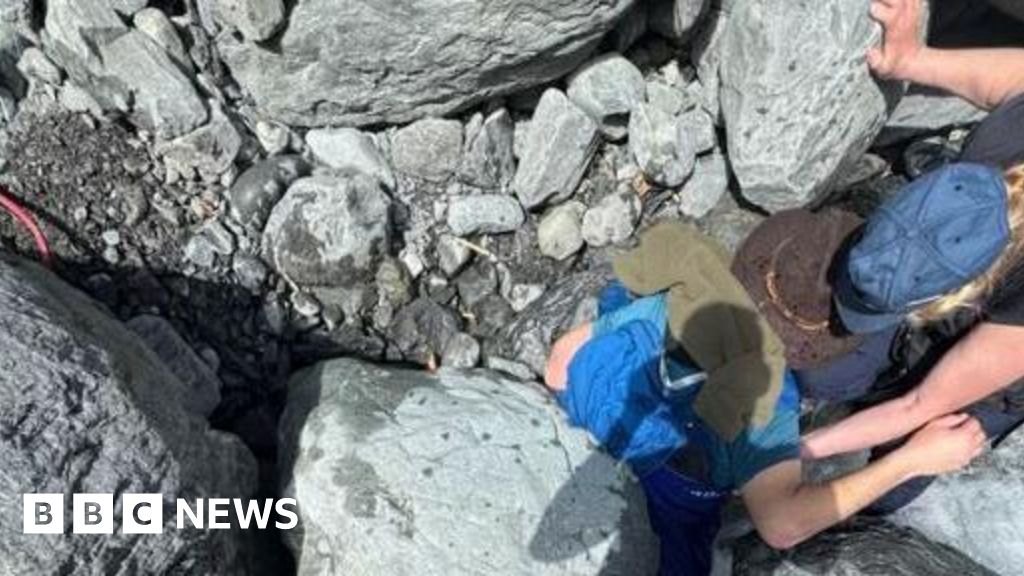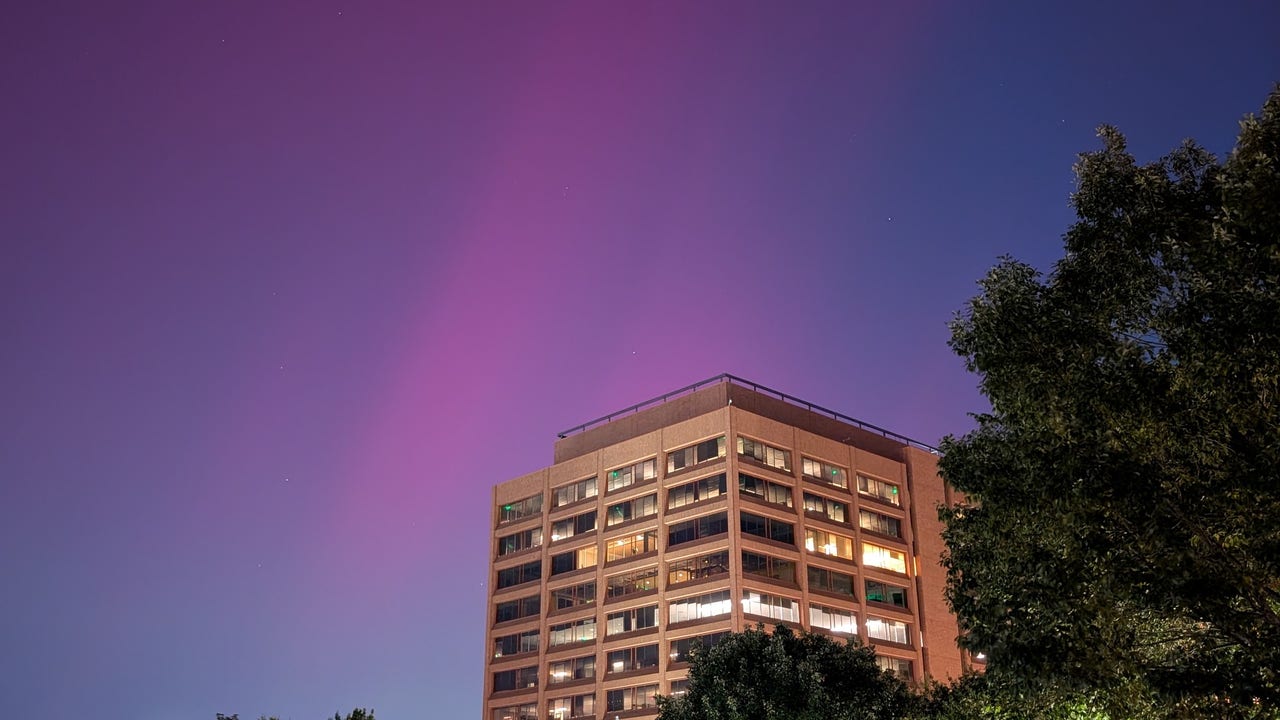Alaska
Election integrity analyst says Alaska voter rolls are least accurate in the nation

By GREG SARBER
Election integrity expert Douglas Frank is touring Alaska, where he made recent stops in Fairbanks, Kenai, and Homer. Frank toured Alaska at the invitation of a local group, Cause of America-Alaska, which has the goal of restoring trust in local elections. Frank has given dozens of these presentations around the country and has gained much notoriety.
I was able to attend both of the presentations Frank made on the Kenai Peninsula. It was a whirlwind of election integrity information from around the country and in Alaska. The vast amount of information he presented was quite persuasive.
Frank said voter fraud exists in Alaska, and verified this claim with supporting information. Alaska has the dirtiest voter rolls in the country, he said, which should be an eye-opener for all of us. Fortunately, Frank also gave some suggestions on what can be done to restore the integrity of our elections.
Frank did not start his career studying election integrity. He has a doctorate in surface analytical chemistry and spent most of his working career as a mathematician and scientist. Because of his reputation in mathematics, he was asked by the Pennsylvania Legislature to study the 2020 election to determine if there was election fraud. Frank made many important findings including:
- – There were many phantom voters on the voter rolls in each county.
- – These phantom voters were used to influence the election.
- – The number of ballots from phantom voters appears to be manipulated by machine algorithms.
- – These behaviors can be observed in other states.
- – The vote counts were influenced at the county level to achieve a target outcome at the state level.
Needless to say, these conclusions were controversial and brought him much adverse attention from mainstream media who were critical of anybody casting doubt on the 2020 election of Joe Biden. While many hurried to debunk his findings, one person who listened was Mike Lindell. Lindell is a Donald Trump supporter and has long claimed that there was fraud in the 2020 election.
After his work in Pennsylvania was completed, Frank joined with Lindell to participate in the election integrity investigations that Lindell had been funding. Frank put it this way in his introduction: Although he never served in the military, he has been called to serve his country fighting for election integrity in small county-level battlefields around the country.
Frank has visited 47 states and made presentations in over 800 counties. In every state he has visited, he said that if he is granted access to the voter rolls by the governing authority like the secretary of state or lieutenant governor, he can demonstrate examples of voter fraud. This fraud is directly tied to the number of excess voters on the voter rolls.
Alaska is no different, and it has the distinction of having the dirtiest voter rolls in the country. Frank makes this claim after examining the population data vs. the number of registered voters. Alaska has more registered voters than adults eligible to vote.

This is not an issue unique to Alaska, six other states also fall into that same category. Dirty voter rolls are a well-known problem, and every state has them to some extent. Alaska attempts to clean our voter rolls by using a nationwide system called the Electronic Registration Information Center, ERIC for short.
When an individual dies or moves out of Alaska, the ERIC system is supposed to notify the state so the voter rolls can be cleaned of these ineligible voters. With a voter roll population 108% greater than the number of adult residents of Alaska, it is clear that the ERIC system has not worked in Alaska.

Frank points out that dirty voter rolls alone are not a problem. The issue is voter fraud that can arise if an unscrupulous individual takes advantage of the excess voters on a dirty voter roll and submits votes for them. The wide use of absentee ballots in the 2020 election, which was justified by the Covid-19 pandemic, made this type of voter fraud much easier than it had been in the past.
Frank related a story about his first stop in Juneau where he was able to obtain a copy of the Alaska voter rolls. He examined it for the Douglas precinct and sorted it by voter addresses. He showed many examples of what he alleges could be a sign of voter fraud.
For several voter addresses, there were multiple people registered to vote there, but they all had different last names. This might have a legitimate explanation, but Franks indicated that this can also be a sign that someone obtained several absentee ballots for ineligible individuals, and then submitted those ballots in the election.
This might seem implausible, but a Rasmussen Report recently revealed that 20% of the people surveyed who voted by mail said they cast a fraudulent ballot in the 2020 election.
Another problem Frank highlighted was a problem with the security of election counting machines. He related a story about a conversation he had with the secretary of state in another state. The individual indicated that the state had the most secure election system in the country, with an alarm system that would ring on the secretary of state’s phone if anyone tried to hack into the system.
Frank was given permission to try to hack into the system and within one minute had access to the state’s election database and was able to discover the secretary of state’s official log-in ID and password. Frank then used that information to log on to over 30 Dominion machines around the state and demonstrate how he could manipulate the voter data contained within them. The entire time this demonstration was happening, the secretary of state’s alarm system on his phone never indicated a violation.
These were the same type of Dominion vote-counting machines we use here in Alaska. Frank made a very clear point that electronic vote-counting machines cannot be trusted.
While the inability to have accurate voter rolls might seem discouraging, Frank gave us the solution. He said to restore integrity to our elections we need to do several things:
- – Minimize absentee voting. Only the military and very few other individuals should be allowed to vote this way. The goal should be less than 1% of the vote be taken by absentee ballots.
- – Vote on paper ballots. (Alaska is a paper-based ballot system.)
- – Eliminate the use of machines to count ballots. Ballots should be hand-counted at the precinct level.
The most important part of his presentation was how to achieve his recommendations. Frank says that there is so much partisanship in all state legislatures that there will never be meaningful reform coming from them. He has talked to many energized state representatives and senators, but they have all been stymied by partisan politics.
This is a David v. Goliath battle that will need to take place at the grassroots level, Frank said. Local groups must use the tools he provides to document the voter fraud that exists in our local communities. After that is established, we need to present this information at the local borough level to convince local politicians that this is a real issue. This must be done on the record at a borough assembly meeting so that there is official documentation of the fraud. Then we need to use this documented fraud to pressure our borough to implement the changes to our election procedures he recommends.
Greg Sarber is a lifelong Alaskan and a retired petroleum engineer.

Alaska
Alaska Sports Scoreboard: May 31, 2025

High School
Soccer
Girls
Thursday
South 4, Chugiak 0
Monroe Catholic 5, Grace Christian 0
Soldotna 1, Ketchikan 0
Colony 2, Service 1
Dimond 5, West Valley 0
Kenai Central 7, Redington 0
Homer 4, Palmer 1
Wasilla 2, Lathrop 1
Friday
Grace Christian 6, Redington 2
Service 5, West Valley 1
Chugiak 4, Lathrop 1
Palmer 1, Ketchikan 0
Soldotna 3, Homer 1
Kenai Central 2, Monroe Catholic 1
Dimond 1, Colony 0
South 3, Wasilla 0
Saturday
Palmer 1, Grace Christian 0
Monroe Catholic 4, Homer 3
Kenai Central 2, Soldotna 0
Colony 1, Wasilla 0
Service 4, Chugiak 1
South 4, Dimond 0
Boys
Thursday
West 4, Wasilla 0
Kenai Central 3, Monroe Catholic 0
Palmer 5, Homer 0
Ketchikan 5, Houston 0
West Valley 2, Dimond 1
Soldotna 3, North Pole 0
Juneau-Douglas 2, Service 1
Colony 2, South 1
Friday
Wasilla 3, Service 1
North Pole 3, Monroe Catholic 0
South 3, Dimond 2
Homer 4, Houston 2
Palmer 4, Ketchikan 3
Soldotna 4, Kenai Central 0
West Anchorage 3, Juneau-Douglas 2
West Valley 2, Colony 0
Saturday
Kenai Central 2, Ketchikan 0
Homer 2, North Pole 0
Wasilla 2, South 1
Palmer 3, Soldotna 2
Colony 5, Juneau-Douglas 0
West v. West Valley (late)
• • •
Softball
Tuesday
Monroe Catholic 7, North Pole 4
Monroe Catholic 11, North Pole 7
Wednesday
Delta 8, Monroe Catholic 2
Delta 7, Monroe Catholic 2
Dimond 15, Service 1
South 10, Bartlett 1
Chugiak 15, West 2
Service 14, Bartlett 13
Thursday
East 9, Dimond 6
South 7, Chugiak 1
Dimond 10, Service 2
Chugiak 12, West 0
Friday
Colony 11, Wasilla 0
Colony 10, Juneau-Douglas 2
East 1, South 0
Chugiak 11, Dimond 1
• • •
Baseball
Tuesday
Dimond 13, East 3
West 12, Bartlett 1
Wednesday
South 9, West 1
Dimond 10, Chugiak 2
Thursday
Service 10, Dimond 1
Eagle River 6, South 1
Wasilla 11, Lathrop 1
Colony 9, West Valley 3
Juneau-Douglas 10, Ketchikan 5
Houston 7, Kenai Central 4
Palmer 13, Redington 7
Soldotna 12, Grace Christian 1
Kodiak 2, Homer 0
Palmer 8, Houston 1
Soldotna 13, Kodiak 4
Friday
Sitka 6, Juneau-Douglas 2
Juneau-Douglas 4, Ketchikan 3
Colony 5, Wasilla 2
West Valley 4, Lathrop 3
South 7, Dimond 4
Eagle River 4, Service 3 (10)
Monroe Catholic 17, Delta 1
Kenai Central 7, Kodiak 3
Homer 8, Houston 3
Soldotna 10, Palmer 0
Saturday
Wasilla 2, West Valley 1
Sitka 14, Juneau-Douglas 12
• • •
Track and field
ASAA State Track and Field Championships
Day 1
Friday
Division I
Girls
3200 Meters Finals
1. Hannah Shaha 11:19.93, Chugiak
2. Hailee Giacobbe 11:23.22, Wasilla
3. Rosie Conway 11:35.46, East
4. Ella Hopkins 11:46.73, Colony
Discus 1kg Finals
1. Mona Koko 119’01.00, West
2. Layla Hays 115’09.00, Wasilla
3. Ailafo Fautanu 106’09.00, Dimond
4. Alessa Scott, 106’03.00, Dimond
High Jump Finals
1. Nevaeh Watkins 5’6.00, Dimond
2. Autumn Larson 5’4.00, Chugiak
3. Avery Johnson 4’10.00, Palmer
4. Hallie Fischer 4’10.00, Soldotna
Triple Jump Finals
1. Izzy Kizer 37’00.25, North Pole
2. Izabela Sullivan 36’02.50, West
3. Amelia Dempsey 34’08.75, Chugiak
4. Maya Tirpack 34’00.00, South
Boys
3200 Meters Finals
1. Vebjorn Flagstad 9:59.04, South
2. Katahdin Staples 10:00.68, East
3. Owen Woodruff 10:00.85, Juneau-Douglas.
4. David Penfield 10:01.51, Chugiak
Shot Put – 12lb Finals
1. Deuce Alailefaleula 53’01.00, Bartlett
2. Luke Miller 51’09.50, Soldotna
3. George Lane 51’03.50, East
4. Benjamin Hiestand 48’05.50, Chugiak
High Jump Varsity – Finals
1. Trey Colbert 6’0.00, Ketchikan
2. Corbin Gerkin 6’0.00, Palmer
3. Cameron Anderson 5’8.00, Service
3. Deontae Cromer 5’8.00, West Valley
Triple Jump Varsity Finals
1. Isaiah Douyon 43’02.75, South
2. Kenneth Motton 42’09.50, Colony
3. Johnathyn Kestel 42’00.75, Juneau-Douglas
4. Corde Bates 41’02.50, Dimond
Division II
Girls
3200 Meters Finals
1. Clare Mullin 11:49.35, Sitka
2. Iris Haas 11:55.96, Delta Junction
3. Marina Dill 11:59.96, Sitka
4. Claira Booz 12:08.88, Homer
Discus 1kg Finals
1. Jieaya Siatini Williams 122’00.00, Mountain City Christian
2. Alexia Pik 108’00.00, Redington
3. Emma Dohrn 95’09.00, Haines
4. Madison Dill 93’08.00, Sitka
High Jump Finals
1. Jessie Wentworth 5’0.00, Su Valley
2. Abby Sampson 4’10.00, Hutchison
3. Emma Walsh 4’10.00, Monroe Catholic
4. Maura McDaniel 4’8.00, Su Valley
Triple Jump Finals
1. Mia Bukala 34’02.00, Redington
2. Caroline Klebs 34’01.50, Grace Christian
3. Reilly Sue Baker 32’01.50, Homer
4. Selah Coots 31’05.50, Kenai Central
Boys
3200 Meters Finals
1. Robbie Annett 9:47.95, Grace Christian
2. Connor Hitchcock 9:48.57, Sitka
3. Colton Merriner 9:49.39, Grace Christian
4. Johannes Bynagle 10:02.21, Homer
Shot Put – 12lb Finals
1. Zach Martel 43’05.50, Redington
2. Kyle Petersen 41’11.25, Valdez
3. Gage Hawes 41’04.75, Houston
4. Kaden Duke 41’03.75, Petersburg
High Jump Varsity – Finals
1. Olin Liljemark 5’10.00, Seward
2. Austin Barnard 5’10.00, Su Valley
3. Royce Borst 5’8.00, Skagway
4. Luke Elhard 5’8.00, Seward
Triple Jump Varsity Finals
1. Gage Ivy 41’00.25, Kenai Central
2. Joshua Woko 40’02.00, Mountain City Christian
3. Jaidhen Oyao 39’07.25, Mountain City Christian
4. Cole McLaughlin 39’02.75, Sitka
• • •
2025 Twilight 12k/6k
12K Male Overall
1: Riley Howard, Anchorage, AK 37:21; 2: William McGovern, Anchorage, AK 37:28; 3: Noah Laughlin-Hall, Anchorage, AK 39:46; 4: Scott Patterson, Anchorage, AK 40:22; 5: Conor Deal, Anchorage, AK 41:30; 6: Andy Peters, Anchorage, AK 42:17; 7: Brian Sweeney, Anchorage, AK 42:26; 8: Connor Marth, Anchorage, AK 42:42; 9: Allan Spangler, Anchorage, AK 42:49; 10: Michael Rabe, Anchorage, AK 42:56; 11: Chad Trammell, Anchorage, AK 43:57; 12: Ryan Beckett, Anchorage, AK 44:11; 13: Dash Dicang, Anchorage, AK 44:18; 14: Eric Mortensen, Anchorage, AK 44:28; 15: Isaac Landecker, Anchorage, AK 44:39; 16: Nick Mendolia, Anchorage, AK 44:44; 17: Andrew Pounds, Anchorage, AK 44:52; 18: Trygve Solomonson, Eagle River, AK 44:58; 19: Mike Garvey, Anchorage, AK 45:08; 20: John Cosgrave, Anchorage, AK 45:25
12k Female Overall
1: Anna Dalton, Anchorage, AK 43:57; 2: Julianne Dickerson, Anchorage, AK 47:24; 3: Molly Walli, Anchorage, AK 47:38; 4: Breanna Day, Eagle River, AK 48:21; 5: Sam Longacre, Anchorage, AK 49:32; 6: Hannah Souders, Anchorage, AK 50:33; 7: Sarah Cosgrave, Anchorage, AK 51:00; 8: Kyra Walter, Eagle River, AK 53:10; 9: Carolyn Stwertka, Anchorage, AK 53:11; 10: Rylee Ruggles, Eagle River, AK 53:11; 11: Allison Macy, Chugiak, AK 53:25; 12: Trophe Brandt, Anchorage, AK 53:47; 13: Anna Smith, Anchorage, AK 54:00; 14: Jillian Gavalya, Chugiak, AK 54:09; 15: Haley Gilman, Anchorage, AK 54:11; 16: Brooke Gottmeier, Anchorage, AK 54:26; 17: Iris Samuels, Anchorage, AK 54:54; 18: Annika Dollick, Levelock, AK 55:06; 19: Sofija Spaic, Palmer, AK 55:07; 20: Lia Slemons, Anchorage, AK 55:31
6K Male Overall
1: Eduardo Orozco, Anchorage, AK 19:31; 2: Hoka Ben, Kent, WA 20:15; 3: Amadeus Semo, Anchorage, AK 21:36; 4: Pedro Ochoa, Homer, AK 21:48; 5: Malachi Stamoolis, Wasilla, AK 22:49; 6: Will Graham, Anchorage, AK 22:57; 7: Mark Fineman, Anchorage, AK 23:48; 8: Cyrus Rader, Wasilla, AK 23:58; 9: Emerson Michaud, WasillaWasilla, AK 24:00; 10: Miles King, Anchorage, AK 24:07; 11: Tyler Berliner, Anchorage, AK 24:37; 12: Reyce Lee, Anchorage, AK 24:45; 13: Kaden Brown, Anchorage, AK 25:00; 14: Joel Stamoolis, Wasilla, AK 25:02; 15: Dylan Chalifour, Anchorage, AK 25:16; 16: Parker Hadley, Eagle River, AK 25:56; 17: Ashley Schultze, Chugiak, AK 26:11; 18: Ed Leonetti, Anchorage, AK 26:12; 19: Zane Hopewell, Anchorage, AK 26:13; 20: Jonathan Moran, Anchorage, AK 26:45
6K Female Overall
1: Emily Moore, Eagle River, AK 23:22; 2: Karina Packer, Anchorage, AK 24:13; 3: Liv Kullberg, Anchorage, AK 25:00; 4: Holly Martinson, Anchorage, AK 25:58; 5: Gigi Leonetti, Anchorage, AK 26:06; 6: Jennifer McGrath, Anchorage, AK 26:31; 7: Nicole Kimball, Anchorage, AK 26:37; 8: Heather Poe, Anchorage, AK 26:41; 9: Meghan Saramak, Anchorage, AK 27:34; 10: Hailee Stepetin, Eagle River, AK 27:37; 11: Estelle Johnson, Eagle River, AK 28:07; 12: Ashley Shaw, Eagle River, AK 28:10; 13: Jane Jackson, Provo, UT 28:39; 14: Alexandra Miller, Anchorage, AK 28:56; 15: Elsa Sternicki, Anchorage, AK 29:05; 16: Cameron Otte, Eagle River, AK 29:33; 17: Amanda Peters, Anchorage, AK 29:35; 18: Akari Kawamura, Komaki, AK 29:50; 19: Brittany Cross, Palmer, AK 30:31; 20: Suzanne Ward, Anchorage, AK 30:44
Alaska
Her husband is getting deported. She plans to leave Anchorage to meet him in Peru
In the past week, U.S. Immigration and Customs Enforcement officials have detained two men in Alaska. At least one will be deported back to Peru, according to his wife, who is an Anchorage resident and U.S. citizen.
The recent ICE arrests in Alaska — totaling at least 11 since January 2025, according to state Department of Corrections statistics — paint a picture of what local immigration attorneys are calling a “shocking” uptick under a presidential administration that’s working toward its quota of deporting 1 million immigrants. Not yet halfway through the year, ICE has detained almost the same number of people — and placed them in Alaska jails before sending them to detention centers out of state — as it did in all of 2024, according to state data.
But that number doesn’t account for all ICE arrests, said Alaska immigration attorney Margaret Stock. Some detainees are flown directly out of state, and thus are not counted by the Department of Corrections, which contracts with ICE to temporarily house detainees. A spokesperson from ICE said they could not answer specific questions about total arrests in Alaska this year.
The wife of one of the detained men says in the wake of the arrest, she’s spent hours on the phone fighting for information about her loved one from both state and federal officials.
In an interview Thursday, Paola Jimenez, 30, said she was just settling into her work at an Anchorage dermatology office last Friday morning when her husband, 32-year-old Cristian Ibanez Velasquez, called her. He’d just dropped her off 30 minutes beforehand.
She picked up like normal. “He said: ‘I got detained. It’s with ICE,’” Jimenez said in an interview nearly a week later. “‘I’m in handcuffs. They want to talk to you.’” Ibanez Velasquez, from Peru, only speaks Spanish, and the ICE officer arresting him didn’t have an interpreter when they handcuffed him in the couple’s driveway.
An ICE officer told Jimenez the news: Her husband was being detained — or effectively arrested — and would be held at the Anchorage Correctional Complex. He would be taken to the nearest ICE detention facility in Tacoma, Washington, she was told, where he’d be deported by plane to his home country of Peru.
[Ukrainian refugees begin planning departures from Alaska ahead of expiring statuses]
Ibanez Velasquez entered the United States through Arizona illegally in 2022, but was in regular contact with immigration officials about his whereabouts ever since, his wife said. He reported changes in address — first to Chicago, and then Anchorage — and uploaded weekly photos of himself through a federal application that monitored his whereabouts, according to Jimenez. He doesn’t appear to have a state or federal criminal record, based on a search of publicly available data.
In Peru, Jimenez said her husband was a motorcycle mechanic. He came to the United States to seek better opportunities, she said.
But a missed a court appearance in New York in 2023 ultimately led to an order for removal that year, which Jimenez said her husband was unaware of. Local immigration attorney Nicolas Olano, who Jimenez contacted for help, broke the news when he looked up Ibanez Velasquez‘s immigration case using the Peruvian’s Alien Registration Number assigned by the Department of Homeland Security. At that point, with a deportation order and a missed court appearance, Olano said there wasn’t much he could do.
The couple’s situation was first reported by Alaska Public Media.
Jimenez questions why ICE officials didn’t notify her husband of his deportation order sooner.
“That same (ICE) officer that was doing his check-ins, was the same officer that detained him,” Jimenez said. “So if there was an order for removal back then, why did no one ever say anything to him?”
The couple met in 2023, and married in fall 2024. Jimenez, who is a dual citizen of the United States and Mexico, said that financial constraints kept them from getting a lawyer to help get her husband the proper paperwork.
Now, her greatest wish is for her husband’s safe and swift delivery to his country, where she plans to eventually meet him.
“The only thing that we want right now is for him to go back home to Peru,” she said. “I would love it if he could stay here, but it’s not going to happen.”
Over the last week, Jimenez has visited her husband at the Anchorage Correctional Complex several times. She said he was wearing a yellow jumpsuit, and they spoke through a glass panel. He complained about a lack of interpretation service at the jail, she said, which prevented him from getting medication. “He said, ‘Nobody tells me anything here.’”
Asked about legal obligations for language interpretations and medication access, Alaska Department of Law spokeswoman Patty Sullivan said, “DOC provides the same level of care for federal inmates and detainees that it does for state inmates. This includes medical care and translation services, as needed.”
On Thursday morning, an online detainee locator showed Ibanez Velasquez was in Anchorage, his wife said.
[Amid immigration crackdown, Anchorage leaders push back at city’s inclusion on federal list of ‘sanctuary jurisdictions’]
A spokesperson for the Department of Corrections confirmed that both detainees were out of their custody as of Thursday evening. The other man, identified as Leobardo Cardona-Rivas, a Mexican citizen, was detained May 25, according to department spokesperson Betsy Holley.
By Friday afternoon, Jimenez said her husband’s online detainee locator showed he arrived in Tacoma. She hadn’t heard from him yet that day.
“It’s heartbreaking,” Jimenez said, choking up.
In Anchorage, the couple loved to go to La Michoacana for treats, take drives to Wasilla, go on dates to Texas Roadhouse, stay home and watch TV with their two cats, and fulfill InstaCart delivery orders together.
Now, Jimenez said, she comes home from work to an empty house, and doesn’t know when she’ll next see — or hear from — her husband.
“When he gets sent to Peru, then I am going to go right behind him,” she said. “Because, well, he’s my husband.”
Alaska
Alaska hiker rescued from under 700lb boulder in frigid creek

A hiker in Alaska miraculously survived after he was trapped facedown in a frigid creek for three hours under a massive boulder.
Kell Morris was hiking with his wife below a glacier outside the city of Anchorage when a rock slide sent him plunging into the creek. A 700lb (318kg) stone came to rest on top of his leg, pinning him in place.
His wife positioned his head out of the water and called for help from rescuers, giving them the exact coordinates of their location.
After a few days in hospital, he walked away nearly completely unscathed.
The accident occurred on Saturday near Godwin Glacier. Mr Morris says that the rock that pinned him in place landed in a “trough” of other rocks, protecting him from being crushed but preventing him from being able to move.
A rescue crew arrived by helicopter and had to use tools to lift the boulder.
They were also working against the clock: the glacier-fed creek was rising as the heat of the day caused ice and snow melt to occur more quickly.
“I thought, I’m not going to last long in this water,” Mr Morris recalled in an interview on Wednesday with the Anchorage Daily News.
“The water had gotten up to my chin,” Mr Morris said. “I was going in and out of consciousness. I’d been shivering, but I stopped shivering every once in a while.”
His wife Jo Roop, who works as a police officer for the city of Seward, made sure he was able to hold himself out of the water in a press up position so she could hike to find enough mobile phone service to call for help.
She still retained her sense of humour during the ordeal, he told Alaska Public Media (APM), recalling: “She graciously tells me, ‘don’t go anywhere. I’ll be right back.’”
Ms Roop was able to provide exact GPS coordinates for their location, according to rescue officials.
In a stroke of luck, a volunteer firefighter overheard the radio call for rescue while working for a sled dog tour company. He was able to divert a helicopter used for shuttling tourists to pick up rescuers and take them to the accident site.
But the helicopter was not able to land, due to the rough terrain.
“The patient was in a boulder field and the helicopter could only hover while firefighters had to jump from the helicopter to the ground as the helicopter could not land safely,” the Seward Fire Department said in a statement posted to Facebook.
Rescuers used inflatable airbags to lift the rock, and a National Guard helicopter brought Mr Morris to hospital where he was treated for hypothermia.
Now recovered, Mr Morris says he suffered little more than bruises, and is already back on his feet.
“I’m walking and, you know, if there was a band nearby, I’d go dancing tonight,” he told APM.
-

 News1 week ago
News1 week agoRead the Full ‘Make America Healthy Again’ Report
-

 Technology1 week ago
Technology1 week agoNow you can watch the Internet Archive preserve documents in real time
-

 Technology1 week ago
Technology1 week agoDiscord might use AI to help you catch up on conversations
-

 Science1 week ago
Science1 week agoTrump Has Cut Science Funding to Its Lowest Level in Decades
-

 World1 week ago
World1 week agoNeo-Nazi cult leader extradited to US for plot to kill Jewish children
-
Movie Reviews1 week ago
Movie Review: 'Pee-wee as Himself' unmasks Paul Reubens
-

 Movie Reviews1 week ago
Movie Reviews1 week agoMovie review: 'Dogma' re-release highlights thoughtful script – UPI.com
-

 Business1 week ago
Business1 week agoPlastic Spoons, Umbrellas, Violins: A Guide to What Americans Buy From China


















